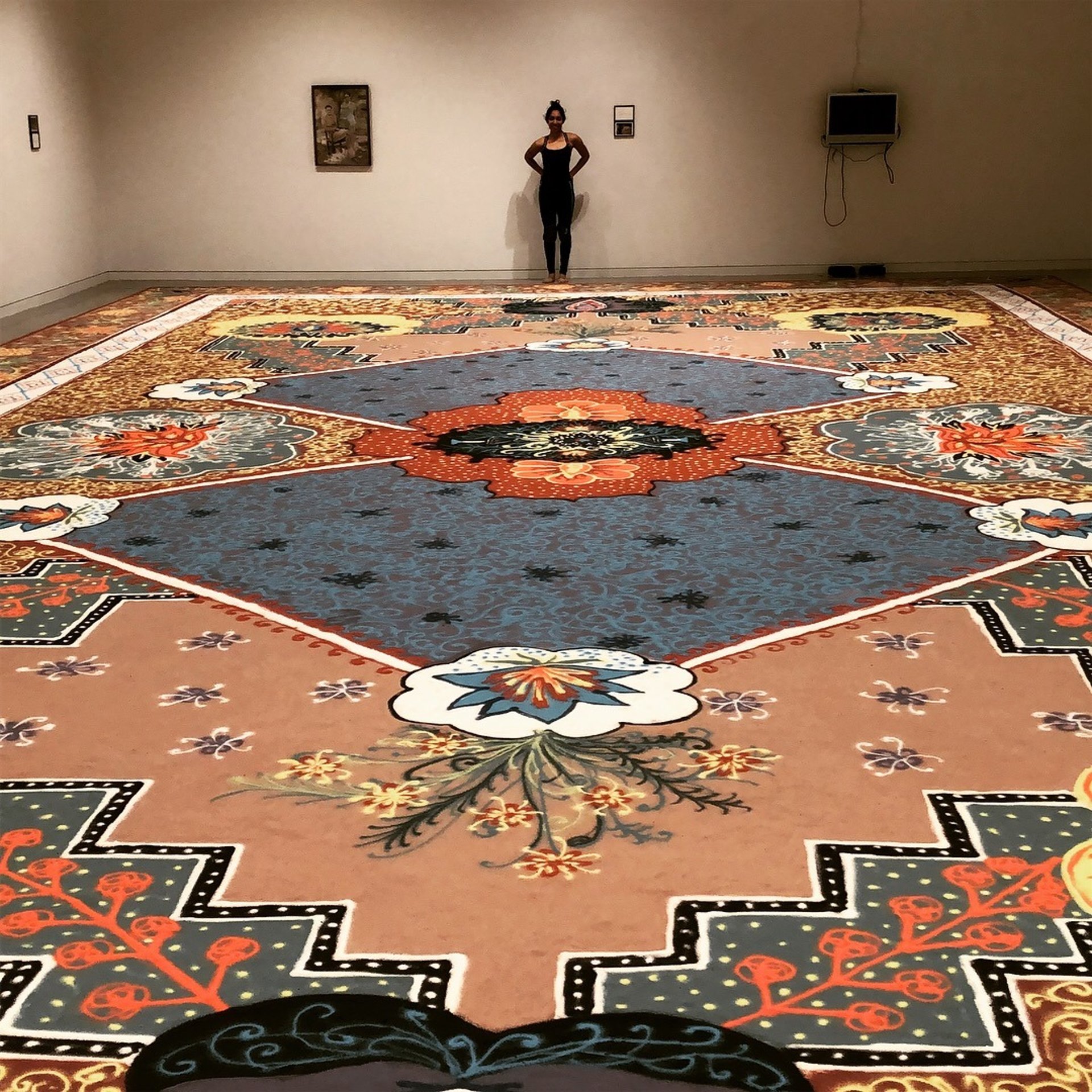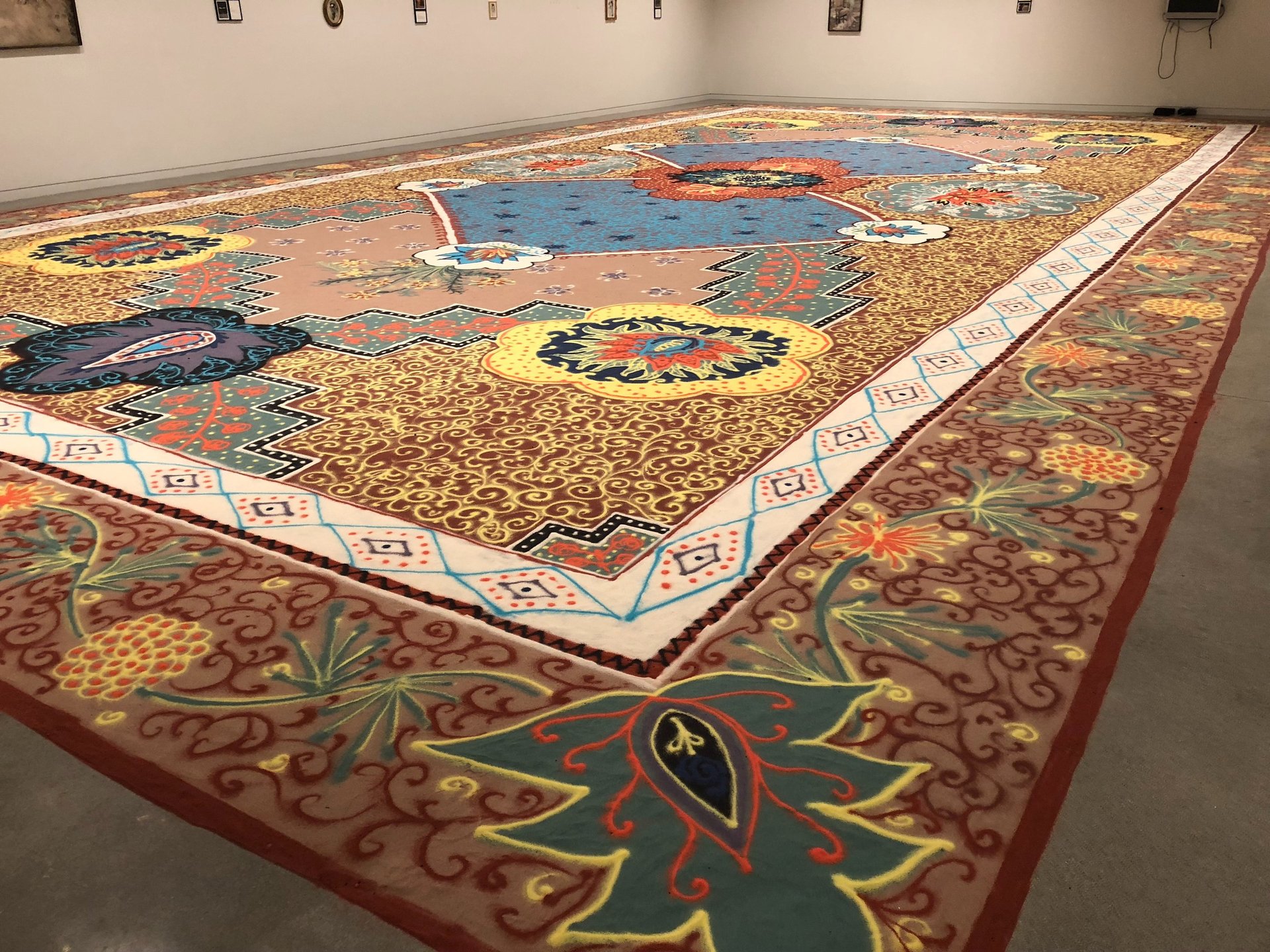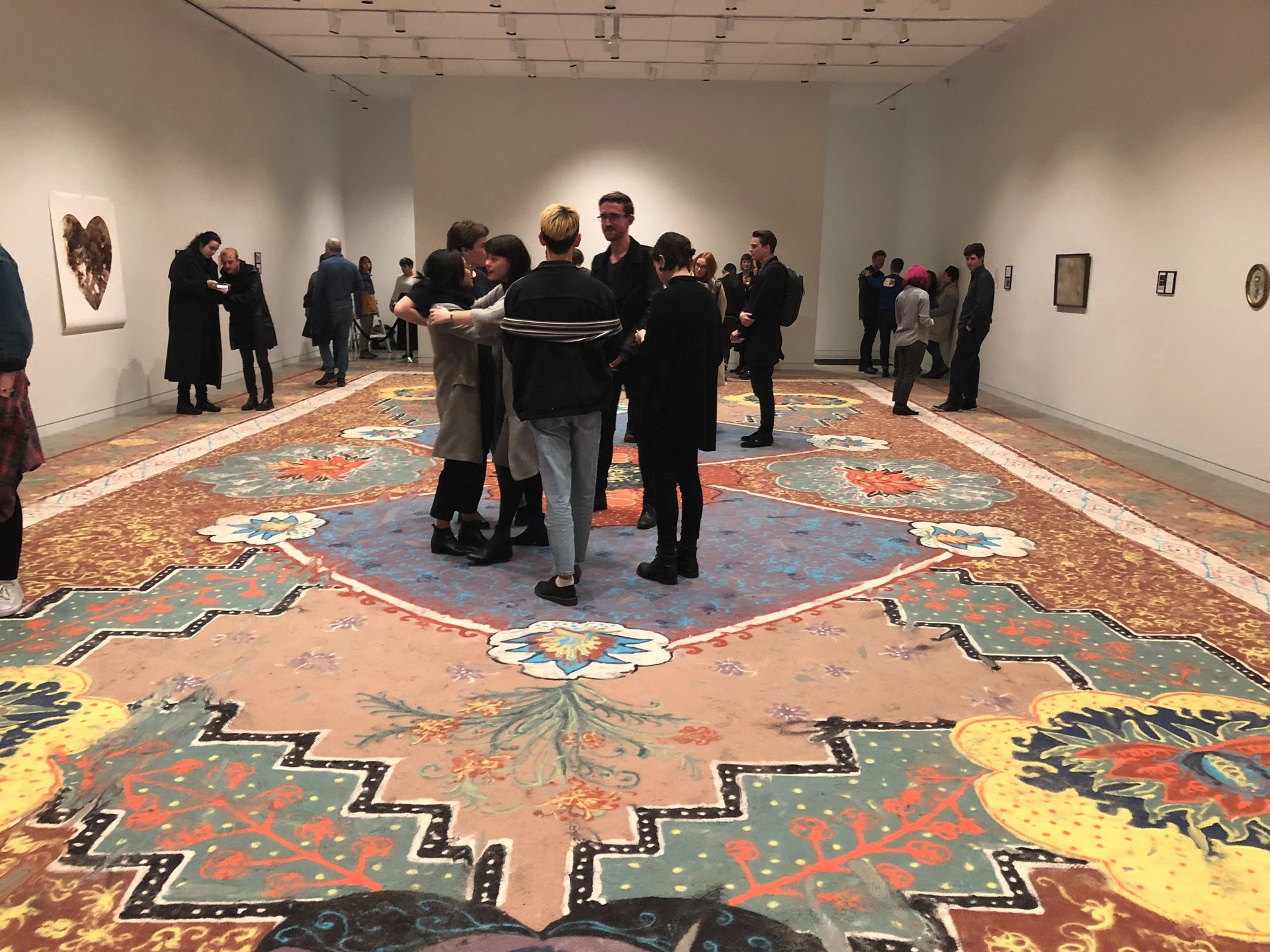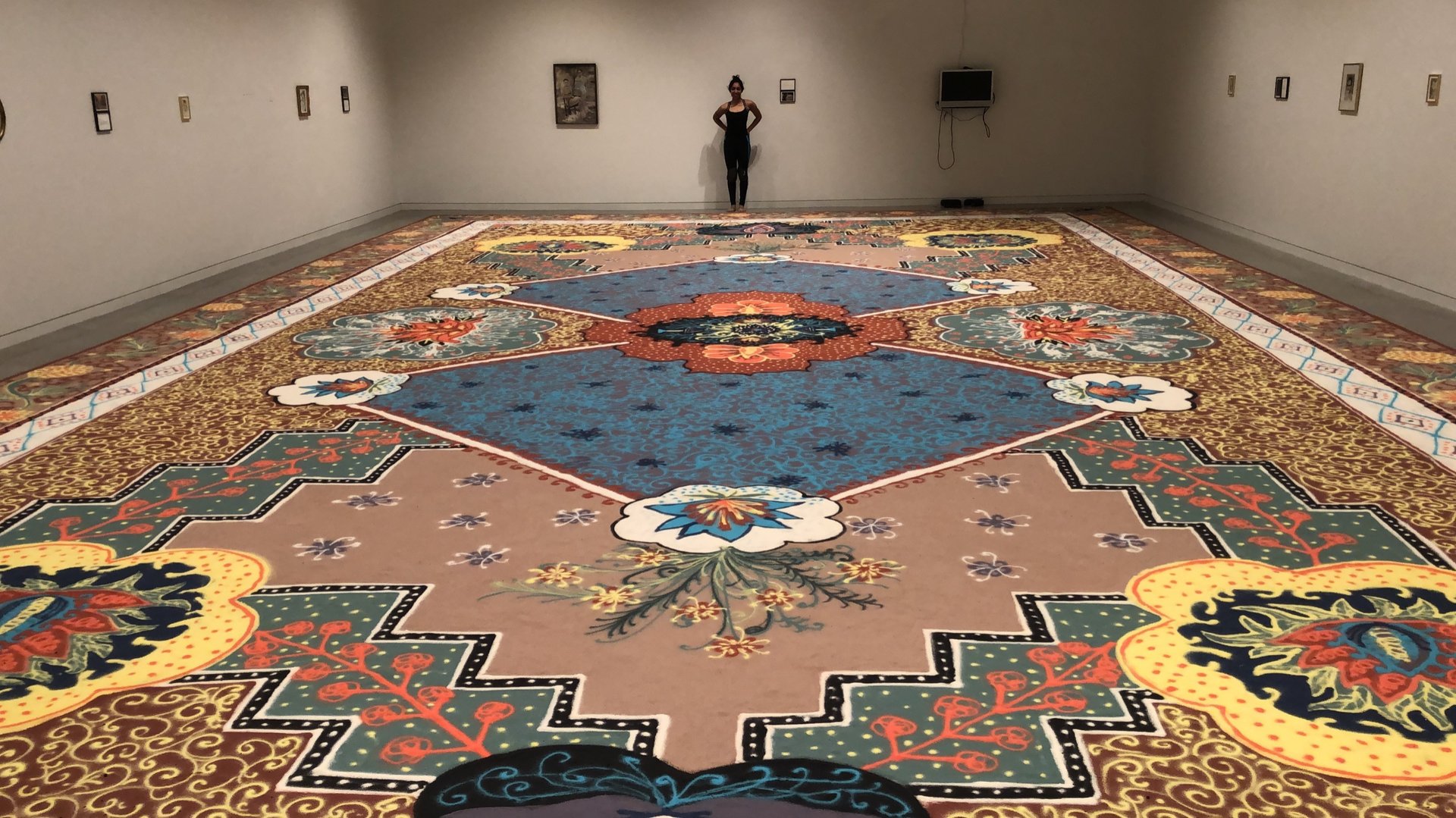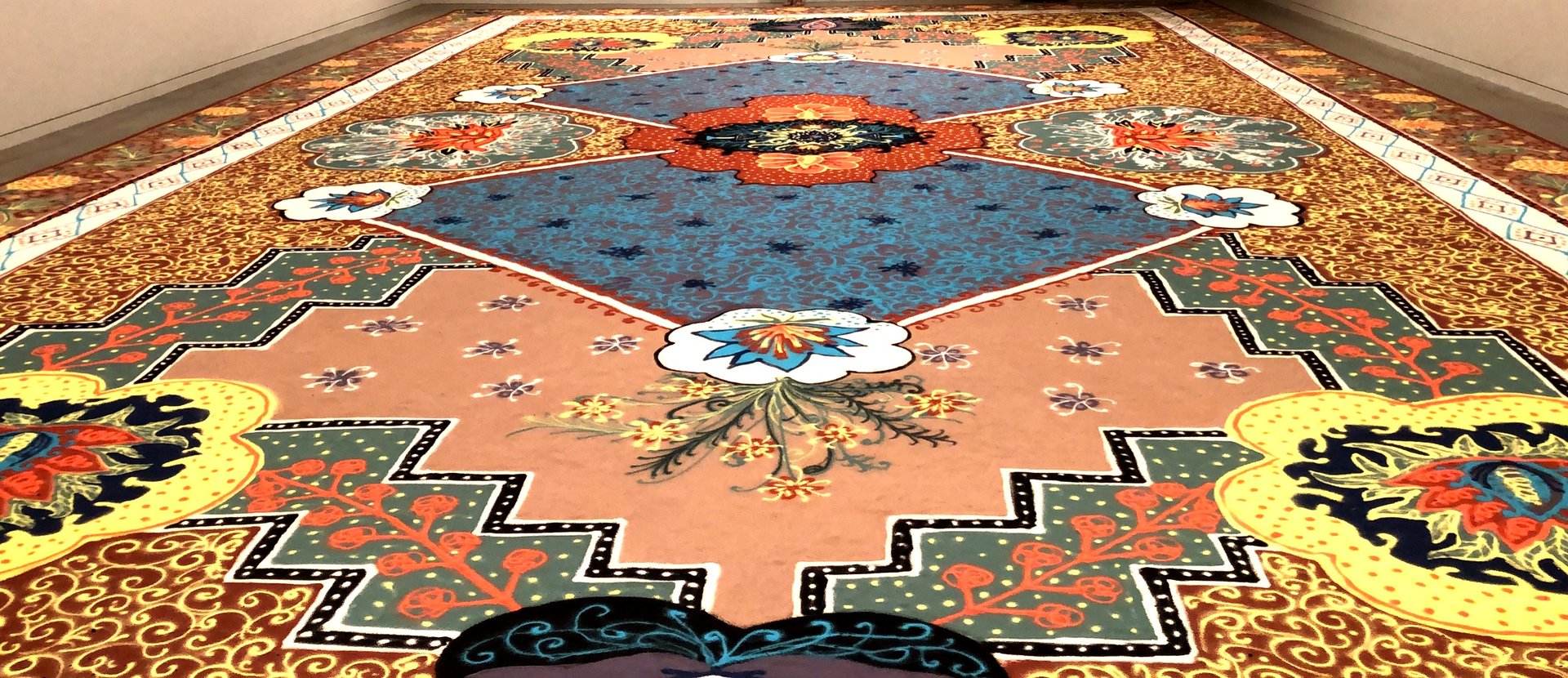Sand Carpets
Qatar Contemporary: Art and Photography
Materials: Sand + Indian dye
9 m X 4 m. 2018
This ephemeral carpet draws inspiration from the patterns of the Middle East, India, and Portugal, reflecting the artist's cultural heritage. The traditional technique of rangoli was used to create the design, inviting viewers to physically interact with the loose sand. The impermanence and transformation of the patterns highlight the cultural shifts and impact experienced with travel. Additionally, mushrooms were incorporated into the design as a nod to the connectivity seen through mycelium networks in nature. With nature as the primary focus of the rug, it was important to emphasize the interconnectedness shared beneath the soil.
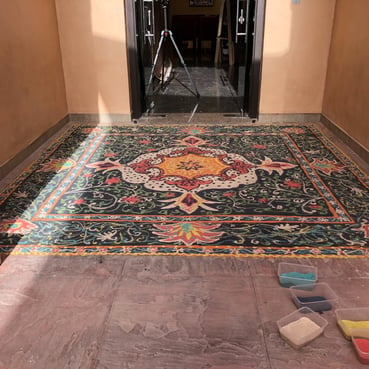
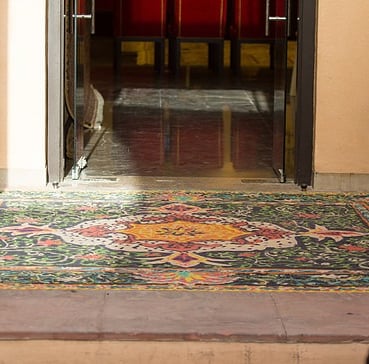
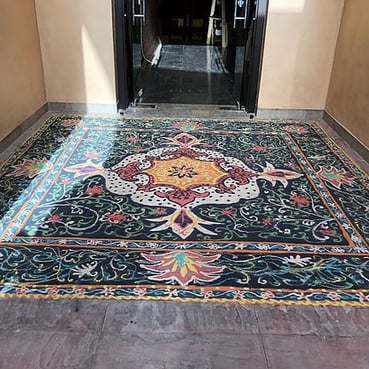
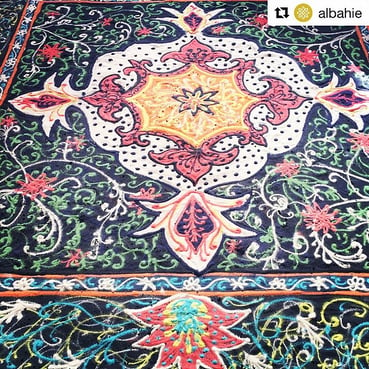
AlBahie Auction House
Materials: Sand, Indian dye
2018
AlBahie Auction House celebrated its exotic collection of rugs from all over the world and provided an opportunity for their guests to experience a rug with a familiar material they might find in their neighborhood - sand. Exploring such material in the context of a greeting rug generated dialog about the semiotics of pattern and simulacrum of the language in carpets and their cultural narratives
Art Leaders Network
Materials: Sand, Indian dye
6 m X 2.5 m. 2018
A simulacrum and appropriation of carpets created using dyed sand and inspirational patterns from Indian and Portuguese traditional rugs. The piece was exhibited as part of the summit between Qatar Museums and the New York Times, to discuss the future of art and culture in Berlin. The ephemeral concept of the rug discussed the sustainability of an art practice and metaphor for changing spaces and cultures.
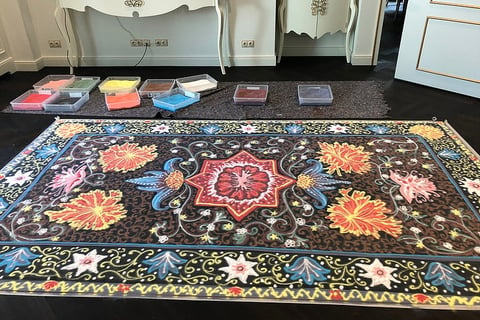

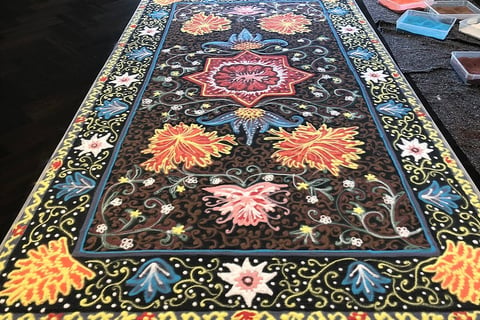

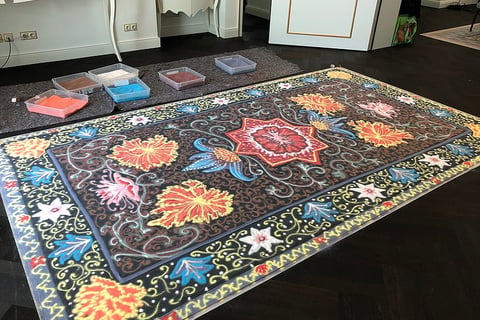

Tracing Erasure
University of British Colombia
Materials: Sand, Indian dye
15 m X 9 m. 2018
A collaborative exhibit showcasing MFA students from Emily Carr University of Art and Design, University of British Columbia, and Simon Fraser University in Vancouver, BC. The ephemeral sand carpet covered the floor of the gallery, inviting visitors to walk upon the piece in order to closely view the works of other artists. The patterns were inspired by Indian, Middle Eastern, and Portuguese rugs, placed in the context of the unceded territories of the First Nations Communities. Using the traditional technique of Rangoli, the work also spoke of endurance and cultural appropriation of carpets and its historical value.
Ruwad - Washington DC
Materials: Sand, Indian dye
6 m X 2 m & 2.5 m X 2 m. 2018
A performative piece as the audience watches the carpet come to life. The ephemeral carpet took inspiration from the traditional Indian technique of Rangoli, to simulate the physical presence of a floor rug. The aspect of time played an important role as viewers were curious to understand and witness the formation process.
A special thanks to Qatar American Institute for this opportunity.
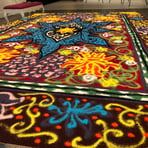
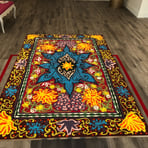
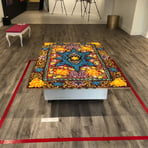

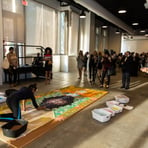
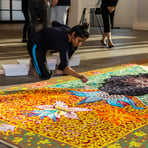
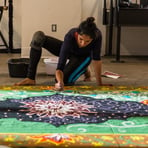
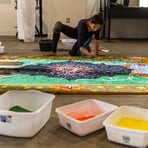
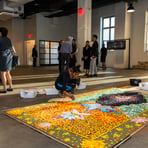
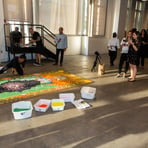
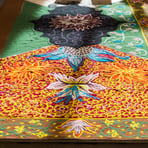
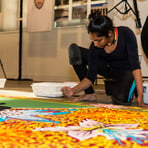
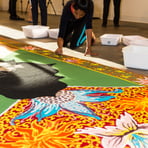
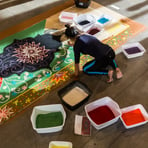
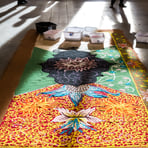
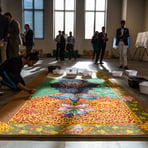
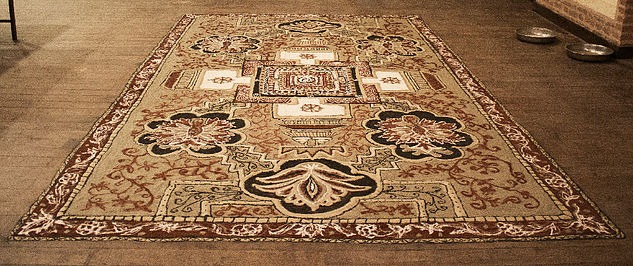

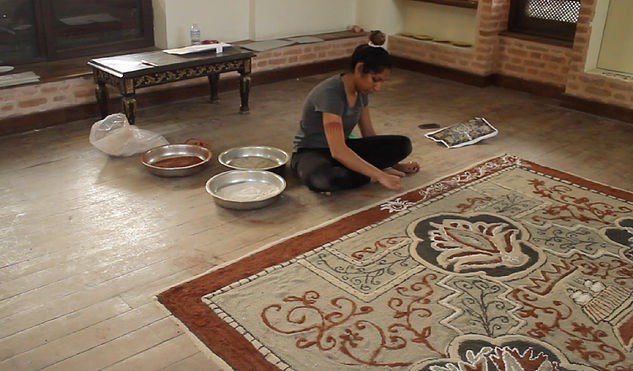

Kathmandu Triennale 2017
Built/ Unbuilt: Home/ City
Materials: Qatar's asphalt, dune sand, and silica, Indian red mud, and Nepalese river sand
The artwork depicts a journey of destruction and reconstruction in the city of Nepal, inspired by the surrounding environment. The use of materials responds to the hope of the people that overcame the devastation caused by the recent earthquake. The piece symbolizes the impermanence of life, as represented by the sand carpet. The construction of the artwork also employs traditional Buddhist mandala-making techniques, utilizing vibrating metal cones as pouring instruments as well as hand pouring sand. The infrastructure of the community is reflected in the piece, showcasing how the city is able to hold tight and rebuild in the face of adversity. The artwork is a powerful representation of the resilience and strength of the Nepalese people.
Sharing this experience with 60 + astounding artists will always be a grateful memory.
A special thanks to Dr. Dina Bangdel, may her soul rest in peace, Her support for this opportunity is sincerely appreciated.
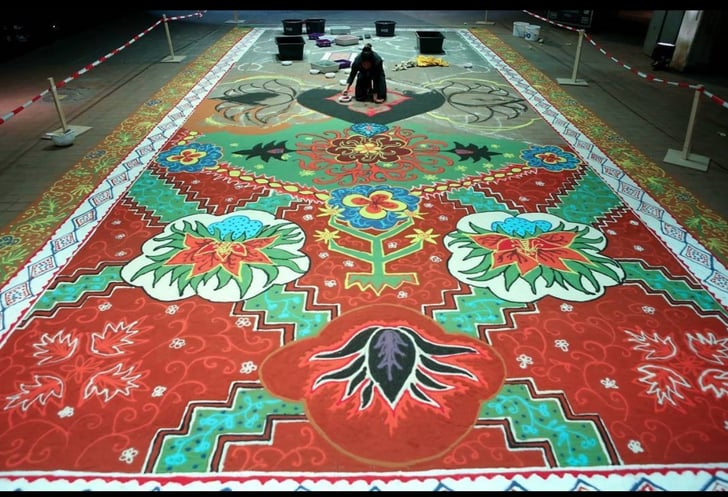

Contemporary Art Qatar: Berlin
Materials: Silica, Sand, Indian dye
13 m X 6 m. 2017
The ephemeral carpet influenced by the beautiful patterns of the Middle East, India, and Portugal is a reflection of my cultural heritage and incorporates the traditional technique of rangoli to apply the patterns of loose sand. People are invited to interact with the artwork by walking on the sand, which enhances the ephemeral nature of the piece. The patterns on the carpet are symbolic of the cultural shifts and changes experienced by people as they travel across the world. This impressive artwork captures the essence of cultural diversity and the ever-changing nature of our world.
Sajjāda Around Qatar
Materials: Sand, Indian dye
2016
Exploring the interaction of sand as a material with external phenomenon's. The weight of sand manifested form and patterns in unique ways on a variety of platforms. This process provided a whimsical structure of experimentation and ephemerality as these assimilated prayer rugs transformed into harmless graffiti.
Shifting Identities
Materials: Sand, Indian dye
12 m X 4 m. 2016
This ephemeral carpet responded to the surrounding natural treasure of Qatar, sand. It depended on the process of dying the rich sifted sand from the neighboring dunes, in order to create an appropriated rug that emerges from India, the Middle East, and Portugal, as a reference to my cultural background. Using a traditional Indian technique called rangoli, the process of pouring sand directly from a fisted palm onto the floor, left the carpet open for interaction as viewers physically walked upon the piece and altered the imagery. The transforming structure of the patterns stood as a metaphor of the everchanging lifestyles we experience through cultural interactions, travels, and relationships we build as an individual and community.
